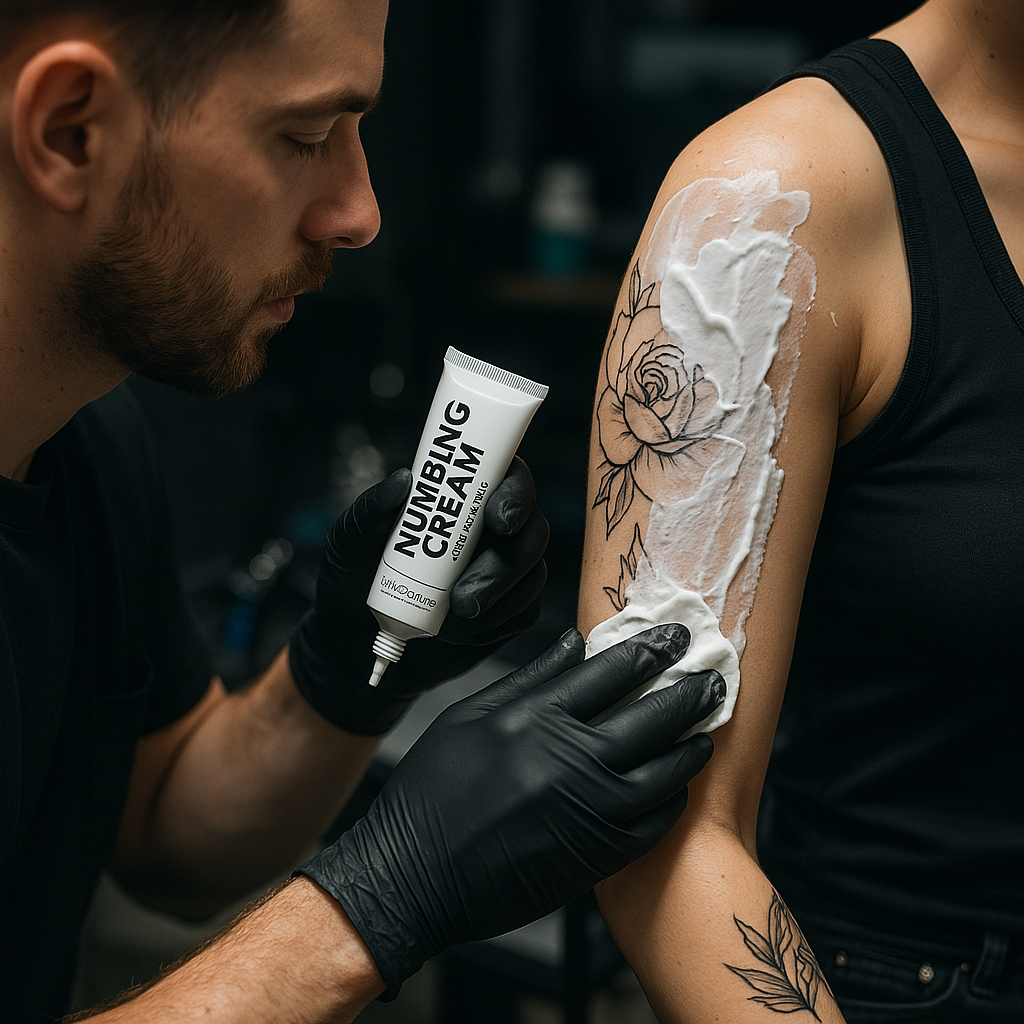Do you ever wonder how tattoo artists and fans deal with the pain of getting inked? Tattoo numbing creams in 2025 are evolving with new trends, offering better pain relief, quicker application, and longer effects. Whether you are a newbie or a seasoned tattoo fan, numbing creams have evolved to make the experience of getting inked enjoyable. In this tutorial, we will present the most up-to-date improvements in tattoo numbing technology, why they’re changing the landscape, and best practices for implementing them.
Why You Should Be Using Tattoo Numbing Cream
Pain is the greatest turn-off for most when it comes to getting tattooed. But did you know that modern tattoo numbing creams can reduce pain during the process significantly? They are applied to numb the skin so that it will be a more enjoyable experience for individuals with lower pain tolerance or getting larger tattoos. Let us discuss more below why anesthetizing cream is one you would want to use for your next tattoo sitting.

Tattoo numbing creams usually consist of active ingredients like lidocaine, which simply block nerve impulses temporarily to the area to be applied. This numbness can potentially cut off the pain involved with the inking process so that you can focus more on the design and less on pain. Numbing creams are now widely recommended by most tattoo artists, especially for large tattoos or skin areas with more sensitive skin.
What are the New Advances in Tattoo Numbing Creams
The tattoo numbing industry is constantly evolving. In 2025, we’re seeing more advanced formulations that offer longer-lasting relief, faster action times, and safer, more effective applications. Some of the most notable innovations include creams that work within 20-30 minutes and last up to two hours, which is a significant improvement compared to older formulas that took longer to kick in and wore off much quicker.
The most exciting development in numbing creams is multi-step formulations. These creams not only numb the skin but also have other ingredients that address inflammation, repair the skin, and even offer gentle moisturizing. Using advanced delivery systems allows the numbing agents to penetrate deeper into the skin so that the pain is more easily alleviated with less product.
How Do You Apply Tattoo Numbing Cream Correctly?
For optimal results, you need to know how to properly use tattoo numbing cream. Application steps can differ slightly depending on the product you’re using, but these are the general steps most numbing creams adhere to:
- Clean the Area: Start by cleaning the area where the tattoo will be performed thoroughly. This is to ensure that there is no oil or dirt that will disrupt the effectiveness of the cream.
- Use the Numbing Cream: Apply a lot of cream on the skin about 30-45 minutes before commencing the tattooing process. Cover the entire area that the tattoo is to be worked on.
- Wrap the Area: A few of the numbing creams require you to wrap the area with plastic wrap to trap heat and allow the cream to penetrate deeper into the skin. That may or may not be an option, depending on the cream.
- Wait for It to Take Effect: Allow the cream to sit on your skin for the recommended amount of time (usually around 20-30 minutes). You’ll feel the skin start to numb, making the tattooing process much more comfortable.
- Wipe Off the Cream: Before the tattoo session begins, wipe off the excess cream. Your skin should now be numb, and the tattoo artist can start the work.
By following these guidelines, you will be in a position to reduce the hurt inflicted by tattooing significantly, thus enjoying a better experience.
Are There Any Side Effects of Using Tattoo Numbing Cream?
As with all products that are applied to the skin, there are side effects with tattoo numbing creams. Although safe if used as intended, caution is to be observed for reactions. Minor skin irritation, redness, or burning may be experienced by some when applied. Allergic reactions in some cases may occur, especially if you have sensitive skin.
To minimize the risk of side effects, it is best to patch test first before applying the cream on extensive areas. Simply apply a small amount on a less sensitive area of your body, such as the inside of your wrist, and wait for 24 hours to see if there are any negative reactions. If there is irritation or discomfort, discontinue use and consult with a health professional.
In addition, always follow the manufacturer’s instructions for safe and effective use.